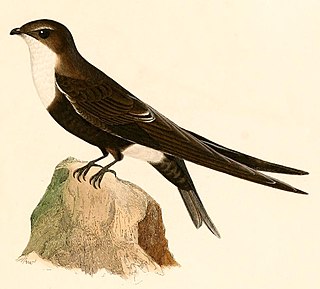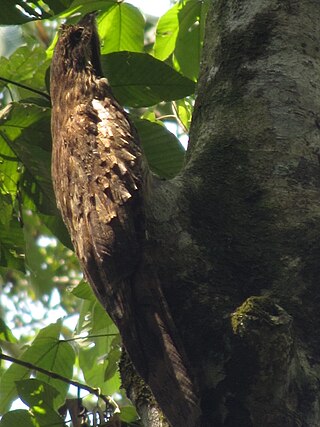
The Amazonian motmot is a colorful near-passerine bird in the family Momotidae. It is found in the Amazon lowlands and low Andean foothills from eastern Venezuela to eastern Brazil and northeastern Argentina.

The rufous motmot is a near-passerine bird in the family Momotidae. It is found from northeastern Honduras south to western Ecuador, northern Bolivia, and western Brazil.

The bronze-tailed plumeleteer is a species of hummingbird in the "emeralds", tribe Trochilini of subfamily Trochilinae. It is found in Colombia, Costa Rica, Ecuador, Nicaragua, and Panama.

The western emerald is a species of hummingbird in the "emeralds", tribe Trochilini of subfamily Trochilinae. It is found in Colombia and Ecuador.

The black-throated brilliant is a species of hummingbird in the tribe Heliantheini or subfamily Lesbiinae. It lives in Brazil, Colombia, Ecuador and Peru.

Humboldt's sapphire or Humboldt's hummingbird is a species of hummingbird in the "emeralds", tribe Trochilini of subfamily Trochilinae. It is found in Colombia, Ecuador, and Panama.

The speckled chachalaca is a species of bird in the family Cracidae, the chachalacas, guans, and curassows. It is found in Bolivia, Brazil, Colombia, Ecuador, and Peru.

The white-tipped swift is a species of bird in subfamily Apodinae of the swift family Apodidae. It is found in Argentina, Bolivia, Brazil, Colombia, Ecuador, French Guiana, Peru, Suriname, Venezuela, and possibly Guyana.

Chapman's swift is a species of bird in subfamily Apodinae of the swift family Apodidae. It is found in Bolivia, Brazil, Colombia, French Guiana, Guyana, Panama, Peru, Suriname, Trinidad, Venezuela, and possibly Ecuador.

The long-tailed potoo is a species of bird in the family Nyctibiidae. It is found in every mainland South American country except Chile and Uruguay.

The broad-billed motmot is a fairly common Central and South American bird of the Momotidae family. They are nonmigratory, sedentary birds that are most frequently seen in singles or pairs. There exist six subspecies of the broad-billed motmot.

The chestnut-headed crake is a species of bird in subfamily Rallinae of family Rallidae, the rails, gallinules, and coots. It is found in Bolivia, Brazil, Colombia, Ecuador, and Peru.

The bay wren is a species of bird in the family Troglodytidae. It is native to southern Central America and northwestern South America.

The black-tailed trogon is a species of bird in the family Trogonidae, the quetzals and trogons. It is found Panama and northern South America.

The gartered trogon, also known as the northern violaceous trogon, is a bird in the family Trogonidae, the quetzals and trogons. It is found in Mexico, all of Central America, and Colombia, Ecuador, Peru, and Venezuela.

The Amazonian trogon, is a species of bird in the family Trogonidae, the trogons and quetzals. It is found in Bolivia, Brazil, Colombia, Ecuador, Peru, and Venezuela.

The Trinidad motmot is a colorful near-passerine bird endemic to the forests and woodlands of Trinidad and Tobago. This species and the blue-capped motmot, Lesson's motmot, whooping motmot, Amazonian motmot, and Andean motmot were all considered conspecific. Though found on both islands, this bird is more abundant in Tobago than it is in Trinidad.

The Andean motmot or highland motmot is a colorful near-passerine bird found from northern Colombia to western Bolivia.

The white-throated toucanet or greyish-throated toucanet is a near-passerine bird in the toucan family Ramphastidae. It is found in Colombia, Ecuador, and Venezuela.

The butterfly coquette is a species of hummingbird in the "coquettes", tribe Lesbiini of subfamily Lesbiinae. It is found in Bolivia, Brazil, Colombia, Ecuador, Peru, and Venezuela.






















